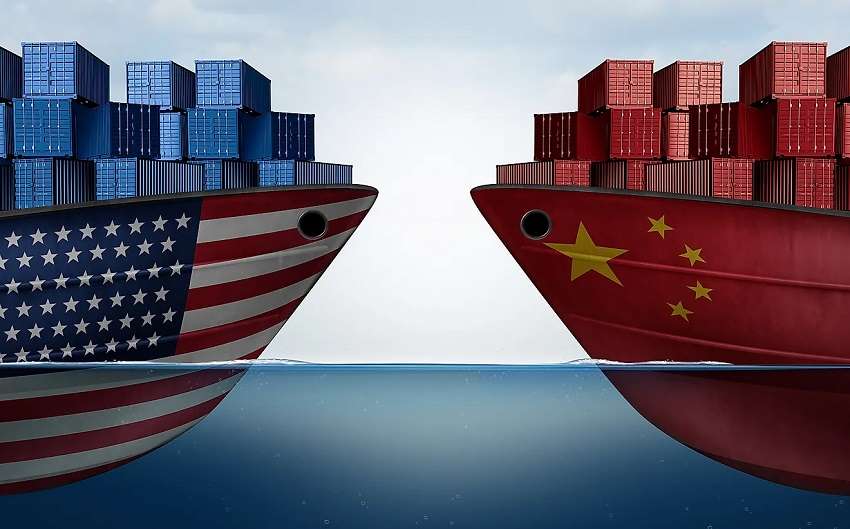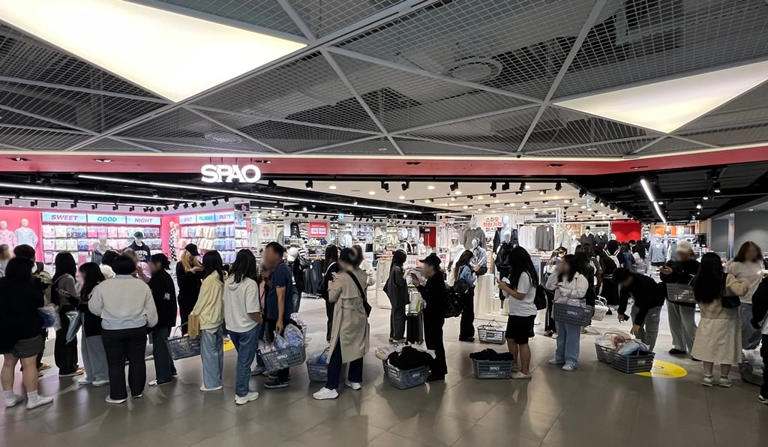FW
Shares of the textile firm Trident surged nearly nine per cent after the company reported a two-fold increase in standalone net profit for the second quarter ended September 30, 2015. The increase in net profit was mainly because of reduced expenses.
Trident had posted a net profit of Rs 20.98 crores for the corresponding period of the previous fiscal. However standalone total income of the company stood at Rs 960.99 crores for the quarter under consideration as against Rs 965.70 crores for the same period a year ago.
Trident is the flagship of the Trident Group, a billion dollar Indian business conglomerate and global player. It has state-of-the-art manufacturing processes and systems coupled with appropriate human capital and credentials. The company was incorporated in 1990. The group today exports to over 75 countries. It is one of the largest integrated home textile manufacturers in the world. With a CAGR of over 30 per cent it is the world's largest manufacturer of terry towels and one of the top 10 yarn manufacturers in India.
The company’s board has declared a second interim dividend of Rs 0.30 per fully paid up equity share of Rs 10 each for the financial year 2015-16.
www.tridentindia.com/
Novibra is introducing high speed spindles. Its new low energy consumption and noise absorption high-speed spindles are designed for tube lengths of 200 mm to 210 mm.
Its clamping and cutting crown is operated by the spindle speed and allows an automatic doffing. The improved design of the teeth guarantees a reliable clamping and cutting of the yarn. The crown is designed to reduce the risk of yarn breakage during start-up, increase energy consumption, minimise material loss and reduce maintenance. The crown is suitable for use with new machines as well as an upgrade for some old machines.
Spindles in modern ring spinning machines reach speeds of up to 25,000 rpm. In these high-speed applications energy consumption is an important issue. The company’s Noise Absorbing System Assembly ensures minimum neck bearing load, vibration and noise level at high speed. This leads to lower energy consumption.
Novibra is based in the Czech Republic. It is a leading company in spindle technology and the only 100 per cent in-house spindle maker constantly bringing innovation to the world of spinning. The leading position of Novibra spindles is based on patented design of spindle insert and the highest quality of production. Beside complete spindles, Novibra supplies also individual inserts and thus other spindle brands are also equipped with Novibra technology.
www.novibra.com

Textile ministry chalks out development plans

“For the development of textile industry in Maharashtra government is working on a new textile policy and developing and promoting various textiles park to strengthen textile clusters,” pointed out Deshmukh. Kavita Gupta, the Textile Commissioner, stressed upon the need of R&D in the textile and apparel industry, which needs to be addressed collectively and in time bound manner. She also said that the government is focusing on skills development and industry should come forward to work hand in hand with government in this area. Gupta also informed that the government will open textile commissioner’s office in every state, which will help industry to interact with the ministry on a regular basis.
In his welcome speech Manoj Patodia, Member, Ficci said that the share of polyester fibre in textile and apparel industry has gradually increased in recent years, from 34 per cent in 2000 to 38 per cent in 2014. “This pattern is expected to remain in growth phase as an alternate to cotton. Ficci has already sent its representation to the government for promoting consumption of man-made fibres to reduce the huge gap between man-made fibres and cotton,” he added.
Various experts speaking at the event were also of the opinion that the gap between natural and man-made fibres must be bridged. As Rakesh Gaur, Sector Head (Polyester), Reliance Industries pointed out, “There is no country where fiscal policies discipline the consumption of a particular fiber except in India. Excise duty was lowered but the gap between manmade fibers and natural fibers has widened, while in other fiber producing countries like China, Japan and US, there is absolutely no difference between the two. Growth in textiles has to come from growth in manmade fibers.
Man-made textiles to boost industry’s growth
R D Udeshi, President (Polyester Chain), Reliance Industries, in his address said that the growth of man-made textiles is playing an important role in textile industry. He said, since the government is aiming to increase the size of textile and apparel industry from $110 billion to $400 billion, inputs from man-made fibre segment will also multiply. Hence, man made fiber will need immediate attention on its development as cotton may not be able to fulfil that demand.
“The incremental growth in cotton will be 1.3 per cent. We are living in a multi-fibre society. So there is room for every fibre to grow. Our per capita consumption is 5 kgs, which is low. The world average is 11 kg. We have to grow and we can. We have a growing middle class, a young population, which is ready to spend 16 per cent on clothing. But policies should not be skewed or disruptive,” said Anil Biyani, Executive Director, Damodar Industries.
Prashant Agarwal, Jt MD, Wazir Advisors believes, investment in man-made fibre based textile value chain will help in successful implementation of the ‘Make in India’ initiative for textile sector. “This will help in reducing dependability on MMF based fabric imports worth $1.2 billion and make India a self-sufficient in MMF based textiles. Out of total global trade of MMF based apparel, which is currently pegged at $170 billion, India has a low share of 2.2 per cent.
Reiterating similar sentiment, Manohar Samuel, President-Birla Cellulose, Grasim Industries said, “We have some big manufacturers in India involved in man-made fibres. Birla Cellulose is one of the largest manufacturers in the world for viscose, Reliance is the largest player in rayon, polyester and polyester and rayon are the major man-made fibres in the world, so we are already quite strong in fibres. We also have a value chain which is clearly segmented into textile hubs such as Erode, Pallipaliyam which are fantastic in viscose, while Bhilwara belt has done good progress in polyester. Another aspect is, consumer demand can be best aligned in India and international markets because of the advantages India has, such as good fibre and manufacturing base.”
www.ficci.com
India’s textile exports fell by 24.3 per cent during the first nine months of the current calendar year. Exports of cotton textiles fell by 3.58 per cent. Textile and clothing exports fell by 5.71 per cent and garment exports by 12.02 per cent. However, textile and clothing exports showed a marginal growth of 0.54 per cent during the first half of the current fiscal as compared to the corresponding period of the previous year.
The industry has been passing through a severe recession for almost 18 months and has called for a slew of policy measures. It appealed for the release of adequate funds to clear all pending TUFs subsidies and a three per cent interest subvention for all textile products. It wants the hank yarn obligation to be reduced to 20 per cent from 40 per cent, the cotton trading policy to be industry-friendly, and the five per cent import duty to be scrapped.
The industry also feels there is a need for addressing raw material issues and implementing a direct transfer of cotton subsidy to farmers. World trade has been undergoing certain structural changes and this has had a severe impact on Indian exports.
Invista has unveiled a Lycra hybrid technology for knit denim fabrics. These fabrics combine of comfort and flexibility of knits with the authentic aesthetics and performance of woven fabrics. What distinguishes this technology from existing knit denim is that the Lycra hybrid fabrics integrate a true denim look and feel with low growth, low shrinkage, and multi directional stretch. The fabrics can be engineered for use in a range of different garment types, each serving different consumer needs.
Invista began working on the new technology several years ago when it saw that performance fabrics were having an increasingly important role in the denim industry. The fabrics employ a specific patent construction to achieve the look and feel of traditional denim, but with much greater stretch and flexibility. Another unique function of the technology is that the fabric can be engineered to have a particular level of stretch.
The company has been able to achieve fabrics with over 100 per cent stretch in one direction and more than 50 per cent in the other, with less than five per cent growth. The Lycra hybrid fabrics have been segmented into three different categories, each its own specific performance levels.
www.invista.com/
Asia World expo is being held in Hong Kong, October 27 to 30. The Expo presents the widest selection of fashion items in Asia, including apparel, accessories, footwear and fabrics.
With more than 1,300 booths, the shows brings together top suppliers from mainland China, India, Korea, Hong Kong, Taiwan, Vietnam and other Asian territories. Buyers will find a wide range of products including casual and fashion bags, shoes and hosiery, hair accessories, fashion jewelry, scarves and shawls, ready-to-wear garments, functional fabrics, sports and casual wear, sweaters and knitwear, underwear, and swimwear.
The event is quickly evolving from a substantially original equipment manufacturer sourcing show to an event where 30 to 40 per cent of exhibitors are marketing their own designs and brands. As a result, it not only provides a sourcing platform for volume buyers and retailers like Zara, H&M, Macy’s, Victoria’s Secret and Marks & Spencer, but also helps entrepreneurial buyers from Amazon, eBay, and boutique shops across Asia to find suppliers best suited to their needs.
Asia World helps manufacturers move up the value chain by connecting them with young designers and new technologies applicable to fashion.
www.asiaworld-expo.com › Home › Event Calendar
Experts say Bangladesh's readymade garments (RMG) sector, is facing serious shortage of skilled workforce, which is likely to slow down upgradation and transformation of the garment industry. Also there is a lack of investment in new machinery and technologies.
Manpower shortage poses a major constraint to realisation of the sector's true growth potential, in terms of productivity and production of high-end apparels. At present the country's apparel sector is facing the shortage of about 0.11 million skilled manpower, from floor to executive level, as per the Directorate of Textile (DoT).
If exporters fail to fill up the positions of highly skilled middle management officials and skilled workers needed in the sector, this problem will become more complex. The gap may be as high as 182,000 by the year 2021 when the country's RMG sector is planned to hit US$ 50 billion export, according to a report by DoT. Information from the Bangladesh Garment Manufacturers and Exporters Association (BGMEA), the Bangladesh Knitwear Manufacturers and Exporters Association (KBMEA) and the Bangladesh Textile Mills Association (BTMA) provided information for the DoT report.
Md. Ismail, Director, DoT, argues they are unable to produce enough skilled manpower to keep pace with demands from the apparel sector. The government, though, has already undertaken a plan to meet the shortage of textile engineers and technologists in the country by a proposal to set up at least two dozen textile engineering colleges and vocational institutes. The low educational level of workers is contributing to inefficiency in the garment factories at present. There is a 25 per cent shortage of skilled workers in Bangladesh's RMG industry at present, according to industry sources.
The recently-negotiated Trans-Pacific Partnership (TPP) could boost Vietnam duty-free access to the US market. However, this may not be positive for the Indian textile and garment industry.
For Indian garment exporters, Vietnam could be the new Bangladesh. This is because of a massive duty disadvantage vis-a-vis competitors, stringent labour laws, poor infrastructure, and inadequate policy support in India. Due to the lure of duty-free access to the US and other TPP markets, some Indian companies may shift base to Vietnam, says analysts, just as they did some years ago to Bangladesh to grab duty advantage in exports and low labour costs.
Vietnam is now the world’s third-largest garment exporter. The US accounted for 22-30 percent of India’s garment exports in recent years and Indian exporters have to pay duty in the range of 14-32 percent for the shipment of textiles and garments there. Thus, the threat seems to be real.
As Shailesh Pathak, Executive Director, Bhartiya Group, says that they employ 6,000 people in their fashion business in Chennai and Bangalore, and there is a high probability that 4,000 of those jobs may move to Vietnam in the next one year. However, some other players, while recognising potential threat from Vietnam, chose to await the full text of the TPP.
Director, Arvind Mills and the newly-appointed Chairman of the Confederation of Indian Textile Industry, Naishadh Parikh, said that the pact suggests there is a potential risk of investment and employment moving to select TPP countries, especially Vietnam. However, he believes that until the full text is made public, it’s too early to say if Indian companies would shift base soon, as any such move depends on several other factors as well, including familiarity of the market.
VF, the American clothing company’s next generation of jeans is Cool Vantage and JadeFusion based on a marriage of market intelligence, textile and design innovation, which keeps you comfortable even in the height of summer. Stephen Dull, Vice-President, Strategy & Innovation, VF Corp, says their customers want performance comfort and style, which is a magic formula. And there are different ways to make denim, some of which are lighter and others heavier. Dull eplians first they did a global scan of technologies and fabrics, and took the most promising ones and tested. Consumer research said that burning, heaviness, wetness, were all problems and people wanted to be cooler, drier and more comfortable.
Dull stressed on consumer insight vehemently saying that VF was good at combining technology with design and consumer insight. With consumer research they got to ‘refreshment’ in denim; cool is a lower level benefit, he states.
However, it was not just about developing the fabric, design and fit were important too as eventually it is all about how comfortable and functional the garment is. Recalling the process Dull states that after they developed the fabric they used Kansai design techniques in Japan had Kansai consultants who helped with the design aspects of comfort.
Besides, the concept of this new denim was also a strong part of VF’s strategy. However, for the brand, it does not end with the product. They have a lab that uses cognitive neuroscience, so there was a lot of work involved through the commercialisation with a 360 marketing campaign, said Dull.
Pakistan's ready-made garment (RMG) industry will get a boost from the US through dedicated vocational centres and improvements in working conditions. Pakistan’s Prime Minister Nawaz Sharif and US President Barack Obama, during a recent meeting, reaffirmed that the two countries have a mutual interest in expanding bilateral trade and investment.
Prime Minister Sharif restated the importance of market access for Pakistan as the most effective, mutually beneficial, and durable form of bilateral economic partnership. President Obama, on the other hand indicated that the US would help Pakistan create conditions to expedite trade and investment-driven growth.
Thus, Pakistan’s RMG sector capabilities will be upgraded with the help of the US. This will be done by supporting dedicated vocational centres and improvements in industry labour conditions. Besides, Pakistan’s International Labour Organization International (ILO) Labour Standards Textile programme will also be enhanced by the help of the US and it will also support the launch of an ILO Better Work Programme. Moreover, an investment event in New York will be supported by the US to highlight opportunities in Pakistan’s RMG industry and other sectors.
Apart from this pledge, the US is also set to enhance outreach and training efforts to boost GSP (Generalized System of Preferences) utilisation, and support Pakistan’s efforts to sanction and implement the World Trade Organization (WTO) Trade Facilitation Agreement (TFA).












